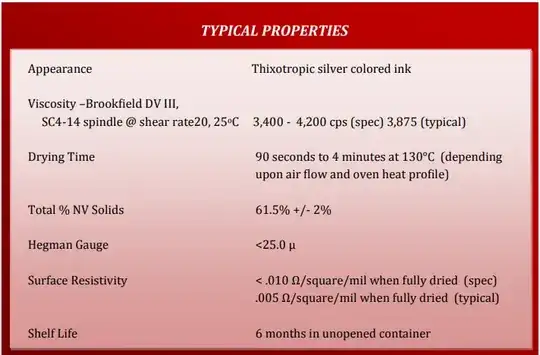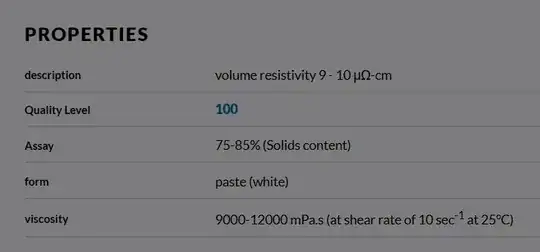Some data sheets specify units of resistivity as Ω/sq/mil. How could I convert that to units of Ω-cm?
2 Answers
There is no direct conversion. They are different concepts:
- Ω - total resistance, as scalar quantity
- Ω-<length> - bulk resistivity of a 3-D material
- Ω/square - sheet resistivity of a 2-D material
- Ω/<length> - linear resistivity of a 1-D wire
- Ω-<area> - contact resistance
For example, you can convert between bulk resistivity and sheet resistivity if you know the thickness of the sheet.
- 172,781
- 17
- 234
- 402
-
-
@Hearth: It's resistance through a sheet (normal to the plane of the sheet) rather than along the surface. – Dave Tweed Oct 20 '23 at 00:36
-
-
@Hearth: OK, yes. That would be the correct units, given that you divide by area to get the total resistance. – Dave Tweed Oct 20 '23 at 01:14
Everything that Dave Tweed said is correct, but I still think that there is more to your question.
We need to see some example datasheets to fully understand the issue. I found these, two different datasheets for silver ink. Let's assume that their characteristics are similar.
The first has units of \$ \Omega /square/mil \$. Square has no units, so this can be simplified to \$ \Omega /mil \$. You would divide by the thickness to get resistance, so they are sloppy with their units, it should be \$ \Omega \text{-}mil \$
The second has units of \$ \Omega \text{-}cm \$. These are normal units for volume resistivity.
So, to convert the first to the second, divide by the number of mils in a cm (393.7).
\$ 0.005 \Omega\text{-}mil \frac{cm}{393.7 mil} = 12.7 \mu \Omega\text{-}cm\$
This is close, remember that these are not identical inks, just similar.
https://kayakuam.com/wp-content/uploads/2020/03/ag500a-silver-conductive-ink.pdf
https://www.sigmaaldrich.com/US/en/product/aldrich/791881
A good discussion about volume resistivity: What's a conceptual way to understand ohm-cm?
- 15,935
- 1
- 20
- 47


Some data sheets...what datasheets? Give links or names, please. – Rohat Kılıç Oct 19 '23 at 20:56